Table of Contents
Clement and Murphy ask high court to overrule Hill v. Colorado . . . but will the petition be granted? — First Amendment News 433
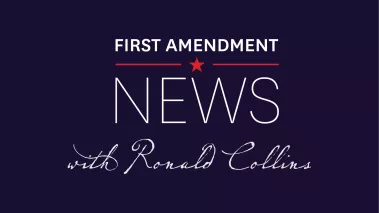
First Amendment News is a weekly blog and newsletter about free expression issues by Ronald K. L. Collins. It is editorially independent from FIRE.
Should the Supreme Court overrule Hill v. Colorado?
That is how the issue is presented in the certiorari petition Paul Clement and Erin Murphy filed in Coalition Life v. City of Carbondale.
Think of it as Justice Antonin Scalia’s posthumous revenge. Hill v. Colorado is a case he dissented in nearly a quarter-century ago. And to think that such a reversal could come about by the efforts of Paul Clement, a former law clerk to Scalia from 1993-1994, when Madsen v. Women's Health Center, Inc. was handed down (with Scalia dissenting in part regarding abortion buffer zones). That dissent has become part of Scalia’s constitutional canon (see Jeffrey Sutton and Edward Whelan’s “The Essential Scalia,” pages 94-98, noting that Scalia “strongly object[s] to the Court’s holding.”)
Has Hill v. Colorado already been constitutionally decimated?
Then again, as suggested by Kevin Russell a decade ago (see below) a “good argument” can be made that Chief Justice Roberts’ opinion in McCullen v. Coakley “effectively render[ed] buffer zones like Colorado’s unconstitutional.”
Petition to overturn Hill v. Colorado denied last term
One other point: In Vitagliano v. County of Westchester (2023) the Court was asked to overturn Hill v. Colorado — it denied the cert. petition filed in that case (See the amicus brief submitted on behalf of Eugene Volokh, et al., in support of the petitioner and the amicus brief submitted by Kentucky and 13 other states).

Excerpts from Paul Clement and Erin Murphy’s petition in Coalition Life:
In Hill v. Colorado, 530 U.S. 703 (2000), this Court upheld a Colorado law that prevented sidewalk counselors from sharing a message on a profound moral issue with their fellow citizens in the public way outside an abortion facility. Even then, multiple members of the Court denounced Hill as “patently incompatible with the guarantees of the First Amendment,” contrary to “more than a half century of well-established First Amendment principles,” and explicable only by the Court’s abortion jurisprudence. Id. at 741-65 (Scalia, J., dissenting); id. at 765-68 (Kennedy, J., dissenting).
Since then, this Court’s intervening First Amendment precedents have “all but interred” Hill, leaving it “an aberration.” City of Austin v. Reagan Nat’l Advert. of Austin, LLC, 596 U.S. 61, 92, 104 (2022) (Thomas, J., dissenting). And most recently, this Court revisited its abortion precedents while citing Hill as an example of how those cases had “distorted First Amendment doctrines.” Dobbs v. Jackson Women’s Health Org., 597 U.S. 215, 287 & n.65 (2022).
Dobbs should have made clear beyond cavil that Hill could no longer skew public debate on a divisive issue being returned to the people. Inexplicably, however, the City of Carbondale treated Dobbs as an invitation to enact a brand-new ordinance modeled on, and virtually identical to, the law upheld in Hill. The lower courts had no choice but to uphold that carbon- copy measure. This Court has a better option.
[. . .]
As this Court recently recognized, see Dobbs v. Jackson Women’s Health Org., 597 U.S. 215, 231, 287 & n.65 (2022), for decades there has been “an entirely separate, abridged edition of the First Amendment applicable to speech against abortion,” McCullen, 573 U.S. at 497 (Scalia, J., concurring in the judgment). That atextual abridgement is exemplified by this Court’s decision in Hill v. Colorado, 530 U.S. 703 (2000), which upheld a law that prohibited coming any closer than eight feet to anyone entering an abortion facility to share literature or engage in “oral protest, education, or counseling” without first obtaining their permission. As this Court recently recognized, see Dobbs v. Jackson Women’s Health Org., 597 U.S. 215, 231, 287 & n.65 (2022), for decades there has been “an entirely separate, abridged edition of the First Amendment applicable to speech against abortion,” McCullen, 573 U.S. at 497 (Scalia, J., concurring in the judgment). That atextual abridgement is exemplified by this Court’s decision in Hill v. Colorado, 530 U.S. 703 (2000), which upheld a law that prohibited coming any closer than eight feet to anyone entering an abortion facility to share literature or engage in “oral protest, education, or counseling” without first obtaining their permission.
REASONS FOR GRANTING THE PETITION.
- The Court Should Overrule Hill v. Colorado
- Hill Was Egregiously Wrong From the Start
- Hill’s Shaky Foundations Have Been Eroded by More Recent First Amendment Cases
- All Remaining Criteria Counsel in Favor
of Overruling Hill- It is Exceptionally Important to Overrule Hill Now, So it Can no Longer Distort The Public Debate That Dobbs Renewed
III. This Case is an Ideal Vehicle to Consider Whether To Overrule Hill
How much staying power has Hill v. Colorado retained?
- Kevin Russell, “What is left of Hill v. Colorado?” SCOTUSblog (June 26, 2014)

One of the things observers were interested in learning when the Court handed down its decision . . . in McCullen v. Coakley, is whether the Court’s 2000 decision in Hill v. Colorado would be overruled. In Hill, the Court upheld, by a six-to-three vote, a Colorado law that generally forbade approaching within eight feet of another person within one hundred feet of abortion facilities. Justices Scalia, Kennedy, and Thomas vigorously dissented. And in the intervening years, four of the Justices in the Hill majority have retired or died (Chief Justice Rehnquist, and Justices Stevens, O’Connor, and Souter). Would the new Chief Justice and Justice Alito take a fundamentally different view?
[. . .]
[In McCullen] the Court holds unconstitutional the Massachusetts law establishing a thirty-five-foot fixed buffer zone around abortion clinics in the state. But did it, in the process, overrule Hill? Certainly, the majority opinion by the Chief Justice does not do so expressly (in contrast with Justice Scalia’s dissent, joined by Justices Kennedy and Thomas, which overtly calls for Hill to be overruled). Indeed, it is notable that outside of a brief mention in describing the background of the case (noting that Massachusetts had originally enacted a narrower buffer-zone provision modeled on the statute upheld in Hill), the majority opinion makes no mention of Hill at all.
But perhaps that is a signal.
Did the Chief Justice effectively overrule Hill or its result as a practical matter, without saying so?
The answer is unclear. Much of the decision today tracks Hill’s reasoning. The majority concludes that the Massachusetts law, although targeting abortion clinic protests, is content- and view-point neutral, and therefore not subject to strict scrutiny under the First Amendment. The Court in Hill reached the same conclusion about the buffer zones in Colorado. That conclusion was vigorously contested by the dissent in both Hill and McCullen today. So that much of Hill survives.
The Chief Justice then goes on to apply to lesser (but still substantial) scrutiny reserved for neutral laws restricting the time, place, and manner of speech, as did the Court in Hill. But while Justice Stevens and his majority found that the buffer zone in Hill was narrowly tailored, the Chief Justice’s majority opinion today finds that Massachusetts’s law does not.
The question is whether the reasons the majority gives today would effectively render buffer zones like Colorado’s unconstitutional, despite the result in Hill. There’s a good argument that they would.
Related
- “Paul Clement hopes to file cert. petition calling on SCOTUS to overrule abortion buffer zone case,” First Amendment News 426 (June 4)
- Mark Rienzi, “Time to Kill Hill,” National Review (Aug. 3, 2023)
Federal court grants permanent injunction to block Florida ‘Stop WOKE Act’ case
- Landon Mion, “Judge permanently blocks part of Florida's 'Stop WOKE Act' as unconstitutional on First Amendment grounds,” Fox News (July 27)
A federal judge on Friday permanently blocked part of Florida's "Stop Woke Act" that was pushed by Republican Gov. Ron DeSantis and other GOP lawmakers to ban critical race theory training in the workplace and in education.
Chief U.S. District Judge Mark Walker granted a permanent injunction against the part of the law that prohibited race-related training in private workplaces, ruling that the 2022 law violated the First Amendment.
The "Stop Wrongs To Our Kids and Employees Act," otherwise known as the "Stop WOKE Act," sought to ban teachings or business practices that tell individuals that members of one ethnic group are inherently racist and should feel guilty of past actions committed by people of that ethnic group.
It also prohibits pushing the idea that a person was either privileged or oppressed based on their race or gender. The law further bars the notion that discrimination is acceptable to achieve diversity.
Video of 9th Circuit oral arguments in NetChoice, LLC v. Bonta
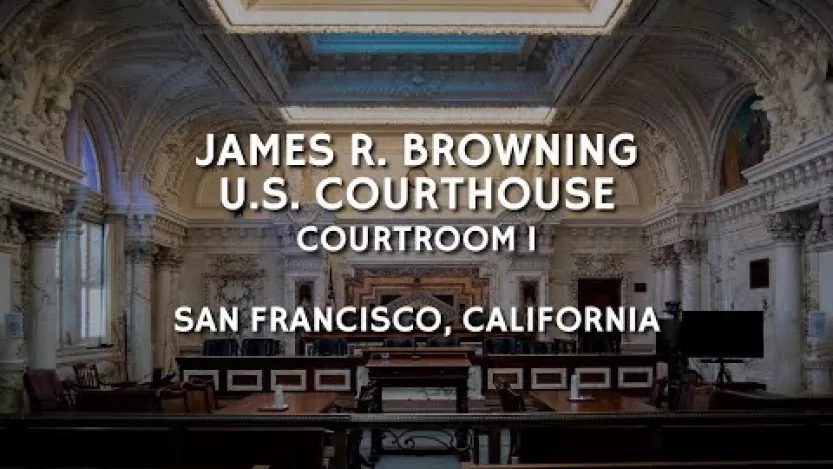
Newly released: Third edition of Bruce Johnson on commercial speech
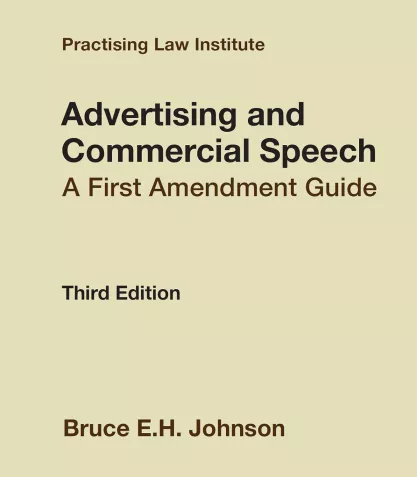
- Bruce E.H. Johnson, “Advertising and Commercial Speech: A First Amendment Guide,” (3rd ed. June 1)
As the laws change, so do our publications. Register to receive updates to this publication at PLI.edu/myupdates.
Written by a First Amendment expert, Advertising and Commercial Speech: A First Amendment Guide examines the origin, meaning, and legal evolution of the Supreme Court’s commercial speech doctrine, focusing on how this central doctrine’s rights and restrictions affect advertising in nearly fifty industries and professions — including advertising for alcohol, financial institutions, prescription drugs, real estate, schools, and tobacco, and for the services of accountants, doctors and dentists, lawyers, pharmacists, and more.
New scholarly article: G. Edward White on reconsidering the legacy of NYT v. Sullivan
- G. Edward White, “Reconsidering the Legacy of New York Times V. Sullivan,” Virginia Public Law and Legal Theory Research Paper (July 27)
This Article argues that the “actual malice” standard for recovery in defamation cases should be abandoned outside cases in which the plaintiff is a “public official,” currently defined as an employee of the government whose office invites public scrutiny and comment. The actual malice standard prevents many categories of plaintiffs from recovering substantial amounts of damages without showing, by clear and convincing evidence, that a defendant either intentionally made a false and damaging statement about the plaintiff or made it with reckless disregard as to whether the statement was true or false.
The Article identifies four features affecting defamation cases not involving public officials that point in the direction of reconsidering the actual malice standard in those cases. Two are doctrinal: the Court’s failure, in New York Times v. Sullivan, to clearly articulate the source of the actual malice standard because of its concern about southern states’ use of defamation law to deter criticism of their resistance to racial integration; and its subsequent misguided application of the actual malice standard to defamation cases that did not raise the constitutional issues it identified in New York Times. Two are cultural.
The first of those is changes in the landscape of media communications in the sixty years since the Times decision, notably the more ideological character of mainstream media and an increased frequency of communications on the internet by anonymous persons.
The second is the advent of media insurance, which makes it possible even for defendants who have violated the actual malice standard to secure themselves immunity from defamation judgments. The combination of those features has made it very difficult for persons injured by false and damaging statements about them to sue successfully in defamation.
Meanwhile the Court’s departure in post-New York Times cases from the principal First Amendment concerns in defamation actions, a “chilling effect” on speech that invites media self-censorship unless a “breathing space” for some false and damaging communications is afforded, has served to obscure the central meaning of New York Times.
The Article proposes a framework for defamation cases that deconstitutionalizes actions in which the plaintiffs are not public officials, restoring much of defamation law to its common law roots. That alteration would not necessarily result in more successful defamation actions, as the common law of defamation contains its own privileges and available defamation defendants will continue to be difficult to identify in today’s media landscape.
The Article invites litigators to consider bringing cases to the current Court in which it has an opportunity to revisit its decisions in Curtis Publishing Co. v. Butts, Associated Press v. Walker, and Gertz v. Robert Welch.
Federal rulings block Biden administration’s LGBTQ+ anti-bias rule
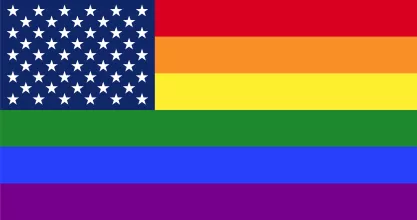
- “Days Before a Biden Rule Against Anti-LGBTQ+ Bias Takes Effect, Judges Are Narrowing Its Reach,” First Amendment Watch (July 26)
New federal court rulings are narrowing the Biden administration’s enforcement of a rule for protecting LGBTQ+ students from discrimination and allowing critics to limit it even further school by school.
A federal judge in Missouri blocked enforcement of the rule in six additional states, bringing the total to 21. The decision Wednesday from Senior U.S. District Judge Rodney Sipple, an appointee of President Bill Clinton, applies in Arkansas, Iowa, Missouri, Nebraska, North Dakota and South Dakota. It comes just a week before the rule is to take effect.
Sipple’s ruling followed one last week by U.S. District Judge John Broomes in Kansas, who blocked enforcement in that state, Alaska, Utah and Wyoming but also in individual schools and colleges across the U.S. with students or parents who are members of three groups opposing the rule. Broomes, an appointee of President Donald Trump, gave one group, Moms for Liberty, an extra week — until Friday — to submit its list of affected schools and said it could include ones for members who joined the group after his initial July 2 order.
Related: Trans activists must embrace free speech
- Victor Thorne, “I’m trans. The trans community's illiberalism is putting our rights at risk,” FIRE (July 25)
There are good arguments for pro-trans positions, but to convince anyone of their merits, we have to actually express them in conversation with those who disagree.
In order to protect our future, trans activists must look to the successful social movements of the past — and embrace free speech.
Video: Volokh on hate speech and censorship
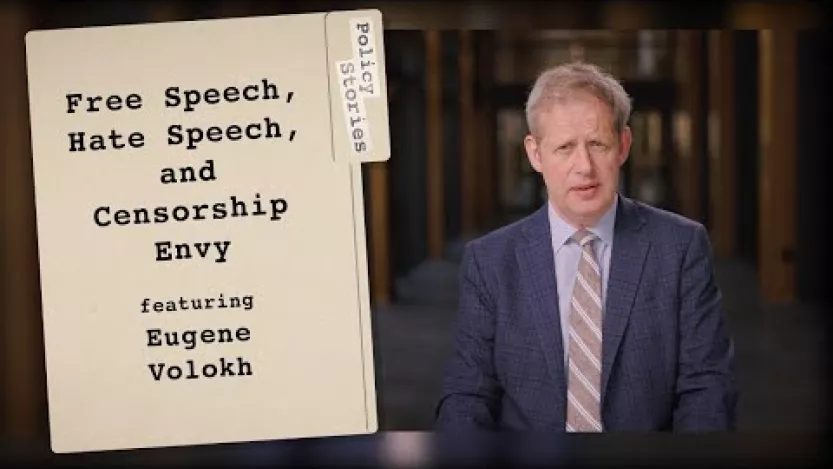
- “Free Speech, Hate Speech, and Censorship Envy,” PolicyEd (July 9)
With the rise of censorship and heightened political division on college campuses, the freedom of speech — especially for controversial or even hateful views – has become more crucial than ever for fostering intellectual growth and societal progress.
To better serve all students, universities across the United States should do more to protect First Amendment rights. By safeguarding open discourse, including unpopular opinions, universities can maintain their role as bastions of knowledge advancement, prepare students to engage in our democratic society, challenge their own beliefs, develop critical thinking skills, and combat harmful ideas through robust debate rather than suppression.
Eugene Volokh is the Thomas M. Siebel Senior Fellow at the Hoover Institution and host of the Hoover Institution podcast.
‘So to Speak’ podcast on free speech and political violence
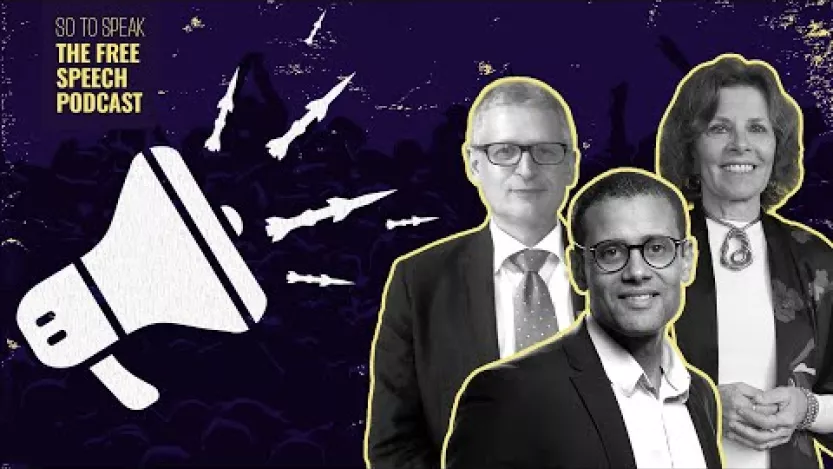
- “Political violence and speech” (July 18)
Did overheated political rhetoric lead to the assassination attempt on former President Donald Trump?
On today's show we explore political violence: its history, its causes, and its relationship with free speech. Flemming Rose is a senior fellow at the Cato Institute. He previously served as foreign affairs editor and culture editor at the Danish newspaper Jyllands-Posten. In 2005, he was principally responsible for publishing the cartoons that initiated the Muhammad cartoons controversy.
Nadine Strossen is a professor emerita at New York Law School, former president of the ACLU, and a senior fellow at FIRE.
Jacob Mchangama is the founder and executive director of The Future of Free Speech. He is a research professor at Vanderbilt University and a senior fellow at FIRE.
New scholarly article on federal child porn laws
- Owen Senders, “Misreading the Federal Child-Pornography Statutes,” SSRN (Apr. 19)
For the past 40 years, federal courts have committed two grievous textual errors in interpreting the federal child-pornography statutes and sentencing guidelines. These errors have caused hundreds of wrongful convictions—many the bases for decades-long sentences—and have produced a body of caselaw that is profoundly incoherent and in direct conflict with basic tenets of First Amendment doctrine. They have also likely endangered children. This article identifies these errors, surveys their consequences, and suggests legal arguments for people charged or convicted under the child-pornography statutes.
The first error impacts the application of all of the federal child-pornography statutes and sentencing guidelines. These statutes and guidelines apply to “visual depictions” of minors engaging in “sexually explicit conduct.” They define “sexually explicit conduct” to include the “lascivious exhibition of the genitals.” The federal courts have conflated the statutory terms “visual depiction” and “lascivious exhibition,” holding that these statutes and guidelines apply to any visual depiction that is, itself, a lascivious exhibition of a minor’s genitals. This error significantly expands the reach of these statutes and guidelines—a visual depiction may lasciviously exhibit a child’s genitals even if the child it depicts is engaged in entirely innocent conduct.
The second error impacts the application of the most draconian of the federal child-pornography statutes, which imposes a 15-year mandatory-minimum sentence on anyone who engages in sexually explicit conduct by using a minor, or who attempts to do so, in order to film that conduct. The federal courts have misread this statute as applying to anyone who uses, or attempts to use, a minor to produce a lascivious image. This error causes people who surreptitiously film minors to face the same decades-long sentences as people who rape minors in order to produce pornography.
The first of these errors has troubling doctrinal implications. It has led the federal courts to criminalize protected speech, to violate the speech-conduct dichotomy that underlies First Amendment doctrine, and to punish people for their thoughts. It has also caused the federal courts to uphold convictions in some cases based on conduct that produces acquittals in others.
Both errors have troubling practical implications. The Government prosecutes approximately 2,000 people per year under the child-pornography statutes—statutes that all of the federal courts are currently misreading. Perhaps most troublingly, by expanding the reach of the child-pornography statutes beyond the scope of their text, the federal courts have incentivized prosecutors to divert limited resources from cases involving the most serious forms of child abuse.
Children and free speech issues in the news
- Jenna Greene, “A first grader drew a ‘racist’ picture. Does the First Amendment protect her?” Reuters (July 29)
- Ken Paulson, “Why was a first grader punished over a Black Lives Matter drawing?” Free Speech Center (July 29)
- Josh James, “Bill meant to protect kids online raises First Amendment concerns, Sen. Paul warns,” WUKY (July 26)
- Luz Lykins, “Kentucky professor argues university violated First Amendment rights,” WORLD (July 26)
- Arielle Mitropoulos, “Judge rules against Exeter student who claimed school violated 1st Amendment rights,” WMUR-9-ABC (July 26)
- Elizabeth Troutman Mitchell, “Family Fights for First Amendment Rights of 6-Year-Old Daughter Severely Punished for ‘Any Life’ Matters Drawing,” The Daily Signal (July 26)
- Eda Uzunlar, “Our First Amendment Rights Don’t Disappear at the Schoolhouse Gates,” ACLU (July 19)
More in the news
- Chantz Martin, “Former high school coach says First Amendment rights were violated in his fight to protect women's sports,” Fox News (July 26)
- “Defamation suit against Fox News by head of dismantled disinformation board tossed by federal judge,” Free Speech Center (July 25)
- Kimberlee Kruesi, “Federal appeals court dismisses lawsuit over Tenn. anti-drag show ban,” Free Speech Center (July 22)
2023-2024 SCOTUS term: Free expression and related cases
Cases decided
- O’Connor-Ratcliff v. Garnier
- Speech First, Inc. v. Sands (certiorari granted, judgment re the bias policy claims vacated, and case remanded to the Court of Appeals for the 4th Circuit with instructions to dismiss those claims as moot) (Thomas and Alito, dissenting)
- National Rifle Association of America v. Vullo
- Vidal v. Elster
- Gonzalez v. Trevino (vacated and remanded, per curiam with Alito, Kavanaugh, and Jackson (joined by Sotomayor) concurring in separate opinions and Thomas dissenting)
- Murthy v Missouri (decided on Art. III standing grounds)
- Moody v. NetChoice, LLC and NetChoice, LLC v. Paxton
Review granted
- Free Speech Coalition, Inc., et al., v. Paxton
- Vidal v. Elster (argued Nov. 1)
- O’Connor-Ratcliff v. Garnier (decided March 15, see below under “State Action”)
- Moody v. NetChoice, LLC and NetChoice, LLC v. Paxton (argued: Feb. 26, 2024)
- National Rifle Association of America v. Vullo (argued: March 18, 2024)
- Murthy v Missouri (argued: March 18, 2024)
- Gonzalez v. Trevino (argued: March 20, 2024)
Pending petitions
- Henderson v. Texas
- Murphy v. Schmitt
- Villarreal v. Alaniz
- No on E, San Franciscans Opposing the Affordable Care Housing Production Act, et al. v. Chiu
State action
- Lindke v. Freed (Barrett, J., 9-0: “The state-action doctrine requires Lindke to show that Freed (1) had actual authority to speak on behalf of the State on a particular matter, and (2) purported to exercise that authority in the relevant posts. To the extent that this test differs from the one applied by the Sixth Circuit, we vacate its judgment and remand the case for further proceedings consistent with this opinion.”)
- O’Connor-Ratcliff v. Garnier (Per Curiam: 9-0: “We granted certiorari in this case and in Lindke v. Freed (2024), to resolve a Circuit split about how to identify state action in the context of public officials using social media. Because the approach that the Ninth Circuit applied is different from the one we have elaborated in Lindke, we vacate the judgment below and remand the case to the Ninth Circuit for further proceedings consistent with our opinion in that case.”)
Review denied
- In Re First Choice Women's Resource Centers, Inc.
- Pierre v. Attorney Grievance Commission of Maryland
- O’Handley v. Weber
- Frank v. Lee
- Mckesson v. Doe (Separate statement by Sotomayor, J.)
- Brokamp v. James
- Griffin v. HM Florida-ORL (application for stay denied)
- M. C. v. Indiana Department of Child Services
- Spectrum et al v. Wendler
- Porter v. Martinez
- Molina v. Book
- Porter v. Board of Trustees of North Carolina State University
- NetChoice, LLC v. Moody
- Alaska v. Alaska State Employees Association
- X Corp. v. Garland
- Tingley v. Ferguson (Justice Kavanaugh would grant the petition for a writ of certiorari. Justice Thomas, dissenting from the denial of certiorari. (separate opinion) Justice Alito, dissenting from the denial of certiorari. (separate opinion)
- Jarrett v. Service Employees International Union Local 503, et al
- Sharpe v. Winterville Police Dept.
- Winterville Police Department v. Sharpe
- Stein v. People for the Ethical Treatment of Animals, Inc., et al.
- Blankenship v. NBCUniversal, LLC
- Center for Medical Progress v. National Abortion Federation
- Frese v. Formella
- Mazo v. Way
Free speech related
- Miller v. United States (judgment vacated, and case remanded) (statutory interpretation of 18 U.S.C. § 1512(c) advocacy, lobbying and protest in connection with congressional proceedings)
- Fischer v. United States (vacated and remanded, 6-3 per Roberts with Barrett, Sotomayor and Kagan dissenting: To prove a violation of §1512(c)(2), the Government must establish that the defendant impaired the availability or integrity for use in an official proceeding of records, documents, objects, or other things used in an official proceeding, or attempted to do so.)
Last scheduled FAN
FAN 432: “The ACLU will never be quite the same – Spirited free speech advocate David Cole steps down”
This article is part of First Amendment News, an editorially independent publication edited by Ronald K. L. Collins and hosted by FIRE as part of our mission to educate the public about First Amendment issues. The opinions expressed are those of the article’s author(s) and may not reflect the opinions of FIRE or Mr. Collins.
Recent Articles
Get the latest free speech news and analysis from FIRE.

FIRE's 2025 impact in court, on campus, and in our culture

The trouble with banning Fizz

VICTORY: Court vindicates professor investigated for parodying university’s ‘land acknowledgment’ on syllabus


